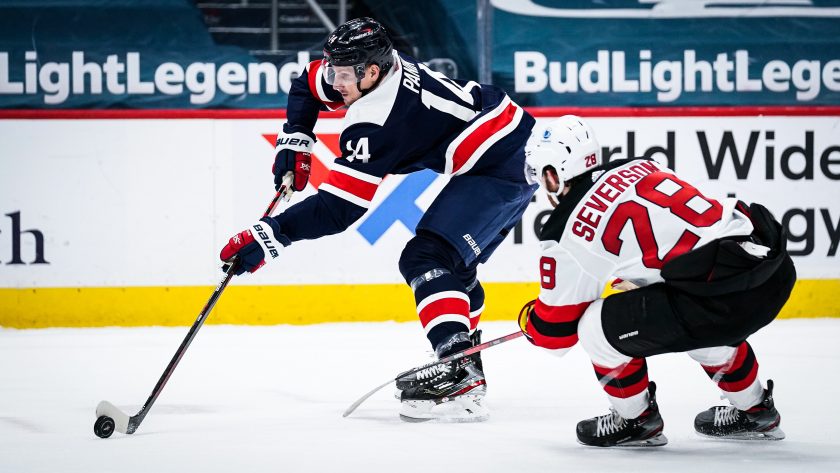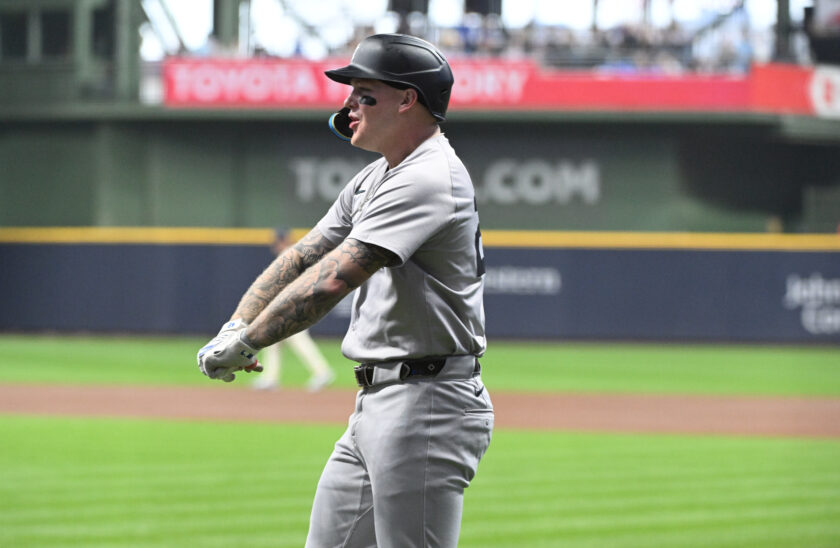ESNY’s 5 gif reaction to New Jersey Devils loss at Washington Capitals

Devils look to rebound against dangerous Capitals in second of back-to-back.
The New Jersey Devils put up a strong fight against one of the best teams in the league, the Washington Capitals, on Thursday, but it wasn’t enough.
They lost 4-3 in a hard-fought game, but they’d look to come back from that loss in game two of a back-to-back against the Capitals.
Head coach Lindy Ruff made some changes to the lineup in hopes that the outcome of the game would be different on Saturday.
Jesper Bratt and Kyle Palmieri would play on the wings of Pavel Zacha instead of Jack Hughes.
Hughes would feature on an interesting line, including Andreas Johnsson on the right wing tonight and Jesper Boqvist, who hasn’t played since Jan. 31, on the left.
Michael McLeod and Miles Wood would remain together with Mikhail Maltsev joining them on the left. Boqvist coming back into the lineup meant Nick Merkley, who scored on Thursday, would sit. Scott Wedgewood would get his first start since March 20.
1st period: Ugly all around
The Devils came out of the first down 2-0. The result exemplified their poor play all-around in the first.
Hughes playing fewer than two minutes in the first epitomized this period for the Devils. His almost invisible defense was a contributing factor to both of Washington’s goals.
Any rust the Capitals showed on Thursday after being off for some time appeared to be out the door on Friday.
They looked like the best team in the division and one of the best in the league to start this game, and the Devils would have much work to do in the final 40 to come out of this hole.
2nd period: Wasted opportunities
The second period was better for the Devils, but they still weren’t able to get on the scoreboard. Ruff clearly didn’t like what he saw from his players in the first and decided to make some changes to the lines going into the second.
He moved Maltsev up to play alongside Hughes and Palmieri. Wood and Bratt moved to opposite sides and wound up playing on the same line as Zacha. Johnsson and Boqvist also swapped sides and joined McLeod on the fourth line.
The Devils clearly did some things correctly and benefited from a bit of sloppiness by the Capitals, who committed two penalties in the second. Unfortunately, this was another game in which the Devils suffered because of poor special teams.
They were unable to score on both man-advantages, meaning the hill they’d have to climb would get even steeper.
3rd period: Terrible ending to a terrible game
The third period should’ve been marked by hope and enthusiasm, but that wasn’t the case at all. This was the Devils’ ugliest period of the game and sealed their fate.
Maltsev’s awful turnover along the boards that resulted in the Capitals’ third goal of the game was another exemplification of the team’s poor play.
They were outshot 17-5 in the final 20 minutes and ended up losing 4-0. This was the first time they were shutout all season.
A mixture of factors contributed to this loss: failure to capitalize (no pun intended) on power play opportunities, poor play from crucial guys like Hughes, and the fact that the Devils had to go up against such a great team as the Capitals.
They’ll have much to work on before Sunday’s game against the Boston Bruins.
Key Moment: Man advantage? More like disadvantage
The key moment(s) for the Devils came in the second period, when they were unable to generate much offense and ultimately score at all on two power play opportunities. The Devils did have another power play in the third, but that came too late.
If they wanted to have a legitimate shot at coming back in this game, they needed to score at least one goal on one of their power plays in the second.
It’s become common knowledge that the Devils have lost multiple games this season because their special teams didn’t show up. We can add this game to the list. It wasn’t their only issue, but it was a key one.
Player of the game: Travis Zajac
Practically the entire Devils team looked lost out there, but Travis Zajac stood out. He had more offensive opportunities than most of his teammates and looked very strong in his own zone.
His play has picked up as of late and having a veteran who’s getting it done on the ice is valuable.
Zajac’s numbers: 16:57 TOI, 50 CF%, 0.11 iXG, 3 blocks, 0.9 xGF, 0.31 xGA, 0 GF, 0 GA, 0.71 Game Score, -0.12 offensive rating, 0.63 defensive rating, and 0.21 individual rating.
Stats are courtesy of Natural Stat Trick and Hockey Stat Cards.
Leen has written about the MLB, NBA, NFL, NHL, and international soccer. She is currently the primary NHL writer for ESNY. Leen's work has been featured on Bleacher Report and she was formerly a contributor for FanSided's New York Mets blog, Rising Apple. She is a co-host of the Yankees-Mets Express podcast.






